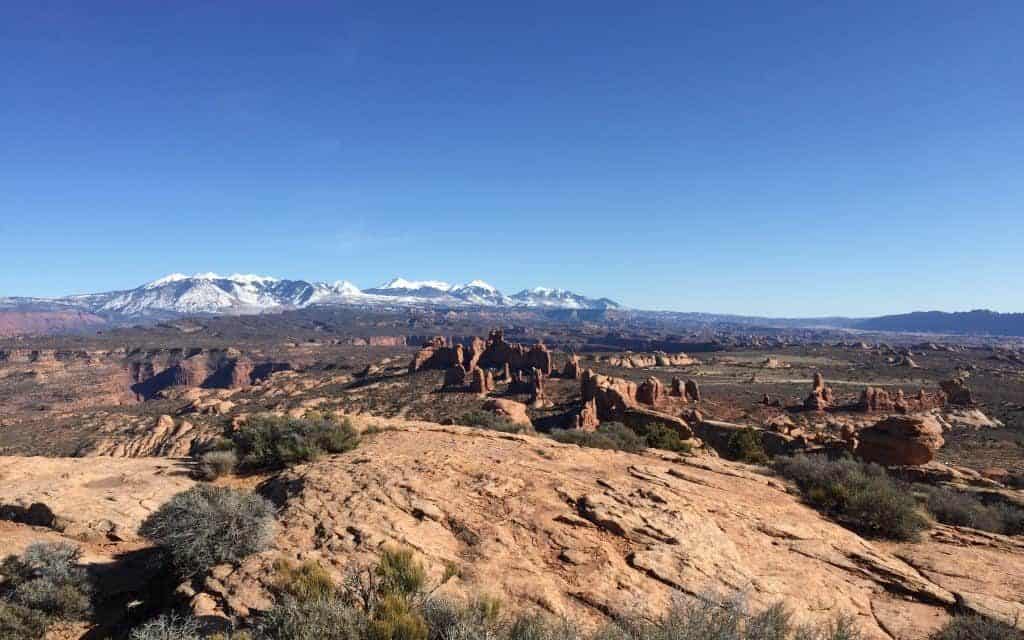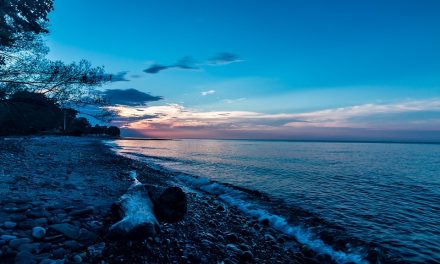Southern Utah is home to some of the most unique and impressive rock formations on earth. Millions of years of erosion and weathering have produced immense towers, canyons, bridges, and of course, arches.
Arches National Park has the highest concentration of sandstone arches on earth, sure. But it also has its fair share of imposing towers, cliffs, and a natural labyrinth of stone so dense that the only option is to get lost inside. If you want to see some of the weirdest of the weird that Utah has to offer, Arches should be at the top of your list.
Visiting Arches National Park is a no-brainer. But before you start packing up the car, check out our handy guide to the best campgrounds in the area. We even added some tips to improve your visit.
What You Need To Know
Arches is a relatively small national park situated just north of the town of Moab. It’s completely jam-packed with things to do, and if you know where to go, you could easily fill a weekend or even a week just exploring the park. Here is some good information to help with the logistics of visiting.
Getting There
Arches have an excellent combination of things to do and great access. The southern entrance of the park is a five minute drive from the center of Moab, which has just about everything you could need in the way of supplies. Moab is located on the banks of the Colorado River and can be accessed easily either from Grand Junction to the east or Salt Lake City to the north.
When To Go
Like most places in the Southwest, the peak of the busy season in Arches coincides with the hottest part of the year. You can avoid both the crowds and the 100+ degree days by coming either in the spring or fall. During the “shoulder season”, temperatures are much more mild and crowds abate. You can even visit in the winter, when (depending on the year) there are still plenty of mild, if chilly days to enjoy the scenery.
The Surrounding Area
Arches is surrounded by a wealth of interesting things to see and do. To the east is Castle Valley, home to some of the most impressive desert towers in Utah’s high desert, and beyond that are the La Sal Mountains, rugged 12,000-foot peaks. West is Canyonlands, another spectacular National Park. South is the aforementioned town of Moab, a great place to grab a bite or a beer. If you want to venture outside the park, you won’t have trouble finding something to do.
Tread Lightly
Whenever you’re visiting the desert, it’s important to remember to leave a minimal footprint while you recreate. The beauty of Arches is delicate and can be easily ruined. Be sure to stick to trails and established campsites.
What Should You Bring to Arches National Park?
If you’ve never been to the red rock desert of Utah, it may be a little shocking to see how different it is from, well, everything else on earth. So what should you bring with you?
Water and Sun Gear
This one almost goes without saying. The sun can really beat down in Arches. Be sure you’re drinking enough water, and always carry more than you need. Sunscreen or light, long sleeves are also a must, as are sunglasses and hats. Even a few hours without protection could ruin your whole trip. Don’t risk it!
It’s also a good idea to bring a sunshade for your campsite. Many places in and around the park don’t have much in the way of cover, and you’ll be thankful for a patch of shade to relax in at the end of the day.
Hiking Shoes and Outdoor Equipment
Hiking is, of course, the main attraction in Arches. Make sure you’ve got some good, grippy, broken-in hikers for scrambling over sandstone. Waterproof sandals are good to have on stand-by as well.
Other musts include a good backpack, preferably with a bladder for water, and gear for anything else you plan on doing in the park. For some, this includes a rope and climbing gear. Others wouldn’t want to be without a bike. Depending on the time of year, you may or may not also need a warm sleeping bag. Be sure to check the weather in advance.
Rainshell
Despite the dry appearance that Arches has, it does often rain. Particularly in the late summer, sudden rainstorms are common. It’s a good idea to have some kind of emergency waterproof layer in your pack in case of a sudden shower. For a little extra fun, you can also bring along camping gadgets and gizmos.
Best Activities In Arches National Park
Let’s get into the meat of it. Arches has a lot to offer for folks of all ability levels across a number of different activities. These are our top picks for must-sees in the park.
Popular Hikes
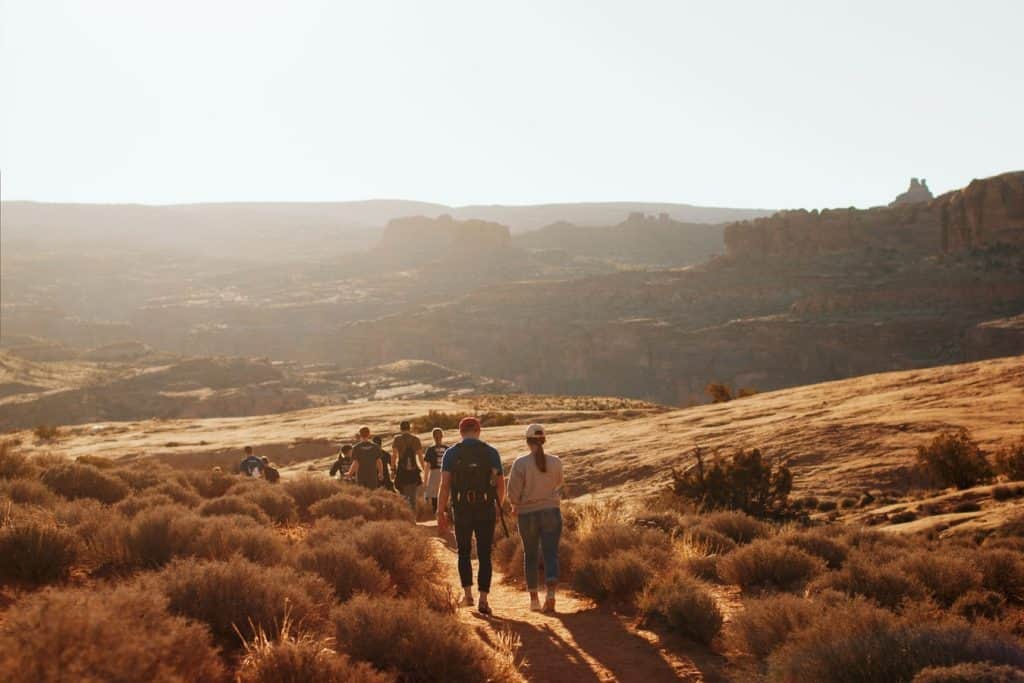
You really can’t beat the classics. Hiking in Arches will take you to some seriously impressive sights. Delicate Arch, often used to represent Utah on maps, is much grander in person.
Dark Angel Loop (via Devil’s Garden Trailhead) will take you on a tour of some of the wackiest geology in the park, including Landscape Arch, the largest arch in North America, as well as panels of ancient rock art. Sand Dune Arch is another great option. It’s a short jaunt to a shaded, sandy arch in a large alcove, perfect for taking it easy and slow.
Whether you’re a beginner or a seasoned hiker, Arches has a number of hiking trails to accomodate!
The Fiery Furnace

You could visit the Fiery Furnace a hundred times and it would never be the same experience. The Furnace is a small, dense maze of sandstone towers, slots, canyons, and arches. You can either take a guided tour, or, relying on your own sense of direction, go get lost inside and find your way back out. There are a million ways to enter and exit, and everything within will leave you awestruck.
The Tower Arch Road
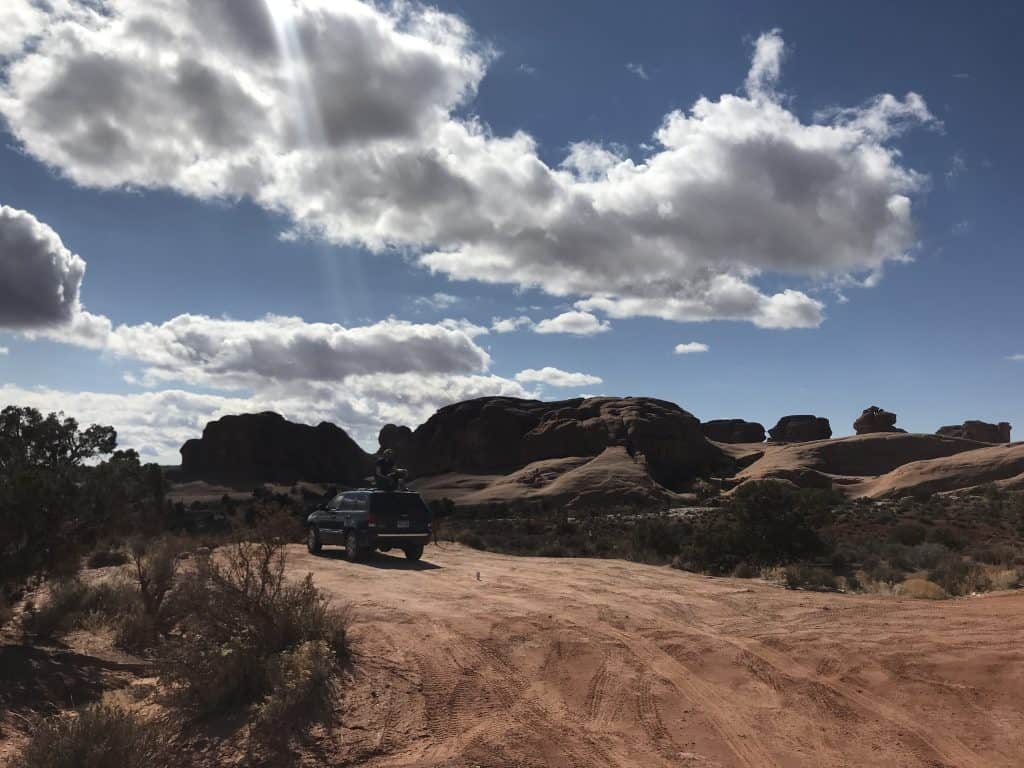
For those itching for some 4WD action, the Eye of The Whale/Tower Arch road is a great beginner 4×4 trail with some amazing stops along the way. The entire trail is found in the northwest section of the park, which gets considerably less traffic than the main road and is much more secluded.
Camping In The Park – Devil’s Garden Campground

There is just one campground in Arches National Park, at the Devil’s Garden. Due to the high demand during peak season, it is usually full for several months straight each year. You can, however, reserve a site here up to six months in advance. If you do reserve a site at Devil’s Garden, you’ll be in a great spot for experiencing the park.
The scenery around the campground is definitely first-rate, with large sandstone formations backing right up to many sites, and great vistas on all sides. Sites range from $25 per night for individual sites to $250 per night for group sites. If you can plan months in advance, this is the way to go.
Campgrounds Around Moab
More likely for most folks visiting the park is finding a place to camp outside Arches. Luckily, due to the proximity of Moab, there are lots of options available, and most all of them are very cheap. Here are some of the best campgrounds in the Arches/Moab area.
#1 – Sand Flats Recreation Area
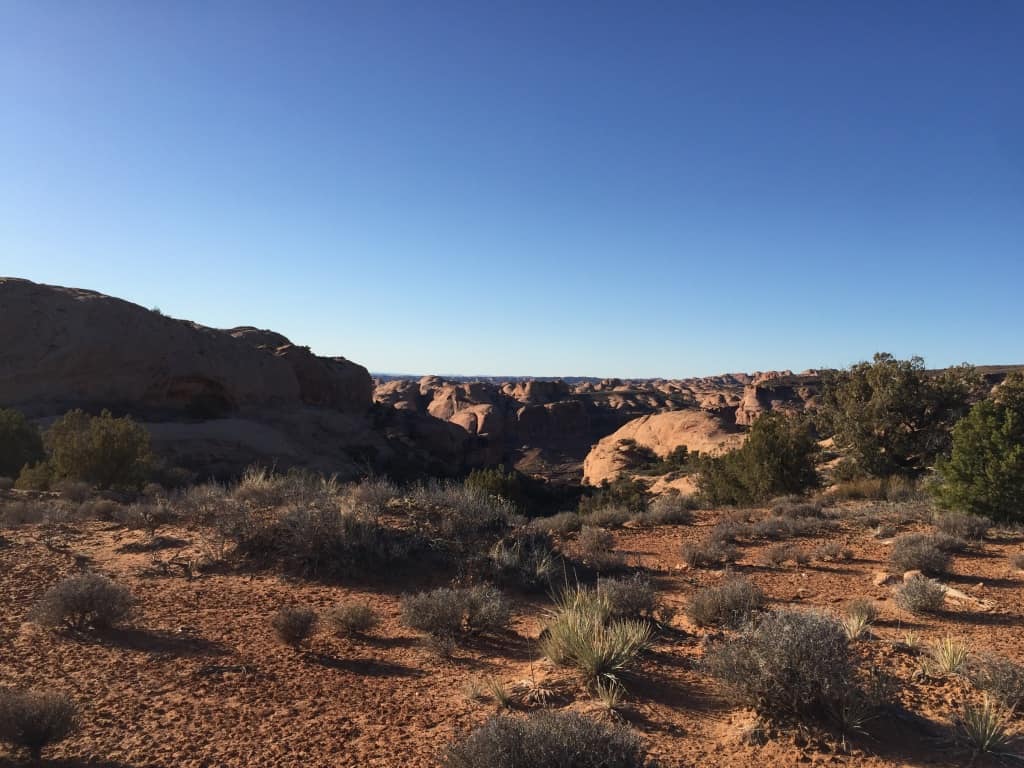
Sand Flats Recreation Area is easily one of the best places to camp in the Moab area. It features nine campgrounds, each of which has both fantastic scenery and excellent access to both town and Arches. There’s also plenty to do at Sand Flats, including the world-famous Slickrock bike trail and some outstanding 4×4 trails. Camping costs $15 per vehicle per night, a good deal by any measure.
#2 – River Road

Going east from Moab will take you up the River Road, where you’ll find seven campgrounds managed by the BLM. These campgrounds are cheap and close to town. Waking up on the banks of the Colorado River, surrounded by huge cliff walls is definitely an experience worth writing home about. You can find more information on camping along the river road, including making reservations here.
#3 – Kane Creek Road and Potash Road

Following the Colorado River west from Moab on either the Potash Road (north side of the river) or Kane Creek Road (south side of the river), you’ll have even more options. Campgrounds like Moonflower Canyon, King’s Bottom, Jaycee Park, Williams Bottom, and Gold Bar are all premium locations, with amazing desert scenery, nearby hikes and things to do, and fast access to Arches and Moab. If you camp off the Potash Road, be sure to check out Corona Arch, one of the most underrated short hikes near Moab.
#4 – Looking Glass Arch
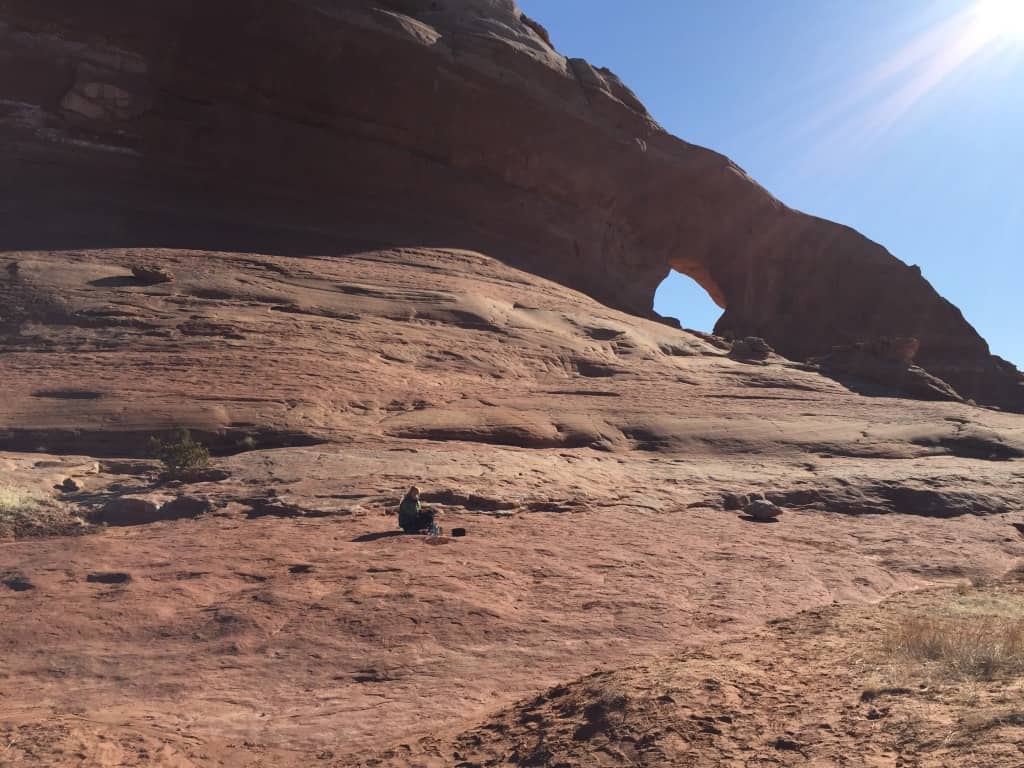
Looking Glass Arch is a destination that’s been growing in popularity in recent years. There is BLM land around the rock where you can practice dispersed camping (free). The arch itself is a sight to behold, and you can scramble all around its base. Looking Glass Arch is a bit more of a drive from Moab – about a half hour south of town, but if the idea of camping somewhere quieter with a unique attraction, it’s a choice spot.
#5 – Horsethief Campground
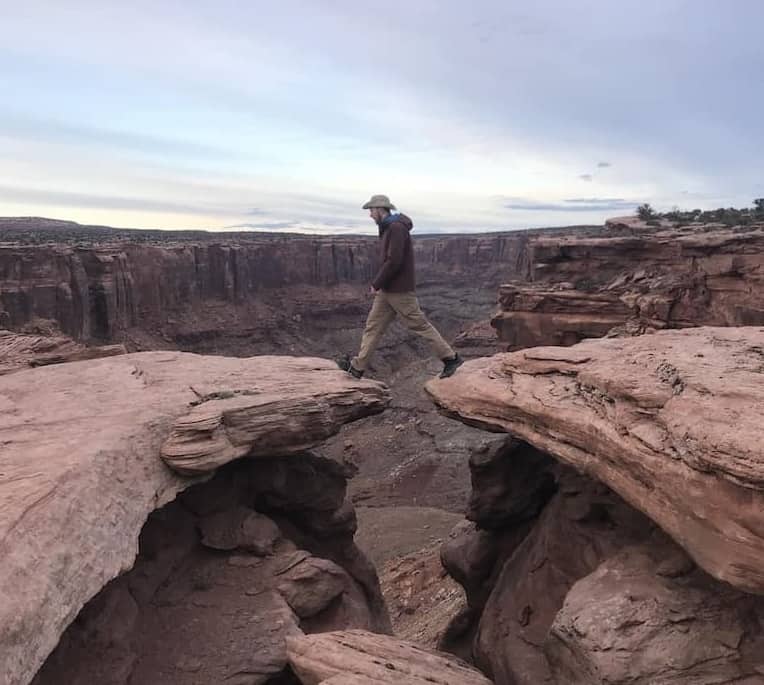
Horsethief Campground is another prime spot for those wanting to camp a little further from crowds. It’s roughly a half hour drive northwest of Moab, on top of the Island In The Sky Mesa. Primitive sites are cheap, just $20 per night. Horsethief is a perfect balance of being out of the way of the crowds while still having the basics (fire rings, pit toilets, and picnic benches) available.
#6 – Dead Horse Point State Park
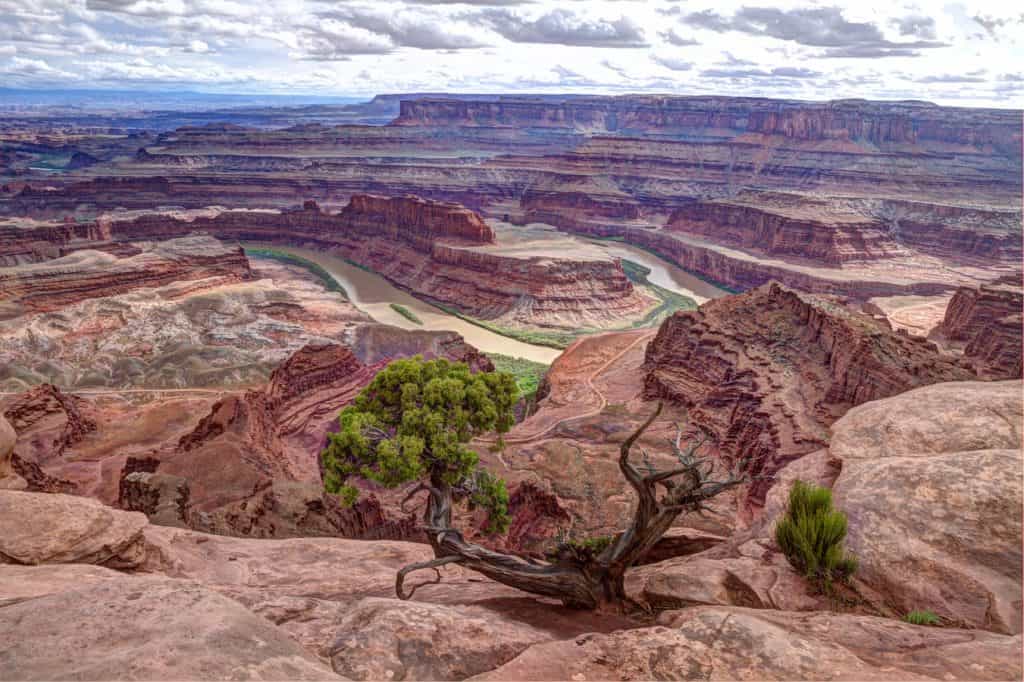
Just south of Horsethief Campground and north of Canyonlands is Dead Horse Point State Park, a fantastic cliffside scenic overlook 2,000 feet above the Colorado River. The drive to Moab is a bit longer, around 40 minutes, but the views are killer. Campsites here go for the same price as Horsethief – just $20 per night. The proximity to Canyonlands opens up other possibilities for days outside Arches as well.
The Weird, Wild West Is Waiting
Arches is one of the most easily accessible National Parks in Utah, making it a top choice for a long weekend or more. But don’t let the ease of access deter you – Arches is teeming with inspiring, fantastic, and strange sights, and the surrounding area is ripe with peace and quiet. If “unique” is what you’re looking for, stop looking. Come see what it’s all about.
- What is Dry Camping? A Beginner’s Guide - November 19, 2022
- Where You Can Camp at Sequoia National Park - November 19, 2022
- 5 Best Fishing Bobbers & When To Use One - March 14, 2021

